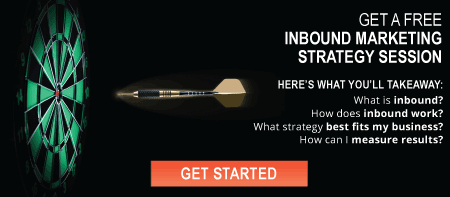
Marketing; it’s a discipline that’s been around for more than a hundred years yet is constantly evolving on a day-to-day basis. Every company’s short- and long-term goals involve growth, expanding the realm of their reach to more and more customers. How do they do this? By marketing to customers in a way that satisfies their needs, and keeps them coming back.
Outbound Marketing
Just like today’s marketer: the traditional marketer’s goal was to sell and they did so through one-way communication. They reached out to customers through print mediums, television, radio, outdoor advertising and cold calls. The marketer would post a message and say, “hey, here’s the information I have but you can get.”
Consumer behaviors have drastically changed in recent years. The information about available products and services is now in the hands of the consumer – they no longer have to open that piece of mail, or sit through a television spot to gain information. In fact, statistics show that 200 million Americans have signed up for the Federal Trade Commission’s “Do Not Call Registry,” 44% of direct mail is never opened, 86% of people skip commercials, and 84% of 25 to 24 year olds click out of websites if an irrelevant ad pops up. The outbound strategy has become an “interruption” to customers. What does this mean for the marketer? Marketers must take on a new strategy, and a new role.
Here's a scenario: your company does pay-per-click, you have some tile ads and also do some re-messaging on websites. This means you practice inbound marketing, right? Not right! These all follow the outbound model, they are examples of digitaloutbound marketing. That's where many people could use more definitive clarification between the two: digital marketing is not inbound marketing.
Inbound Marketing
So what is inbound marketing? The traditional marketer’s role was to sell; the modern marketer’s role is to educate. Customers have just as much information available at their fingertips as do marketers, and they’re not looking for someone to sell them something…they’re looking for answers to their questions. Inbound steers away from the interruptive method of outbound marketing. Companies that market the inbound way do not reach out to customers.
Instead, they draw them in by creating and sharing useful, relevant content. By useful content, I’m not talking about the promotional brochure with a bulleted list explaining why they should buy your product on the inside cover. In fact, the majority of the content you share should not be promotional. Content should follow the 80/20 rule: that is, 80% of the content you provide should be interesting and helpful, the other 20% can be promotional.
With inbound marketing, communication is a two-way street…lit up with interaction coming from both sides. Customers find you through search engines, referrals and social media channels. Let’s run through a super-simplified overview of the inbound process.

First, content is created in the form of blogs, eBooks, infographics and white papers just to name a few. This content is shared via social media channels such as Facebook, Twitter, Pinterest and LinkedIn. The content is picked up and linked back to the company’s website, optimizing it for search engines, therefore driving more traffic and leads. Because it costs 62% less than outbound marketing, inbound is increasing its ROI. Inbound tactics generate traffic, consequently generating leads and revenue.
When it all comes down to it – why is inbound benefiting your company? Because it involves a marketing strategy that cuts through the clutter that once was traditional marketing. Consumer behaviors are changing and marketing strategies must evolve with that change. Keep in mind that digital marketing is NOT inbound marketing! Inbound is not only keeping up, it’s surging forward. Click below to download the guide on hiring and inbound marketing agency.
Topics: marketing






